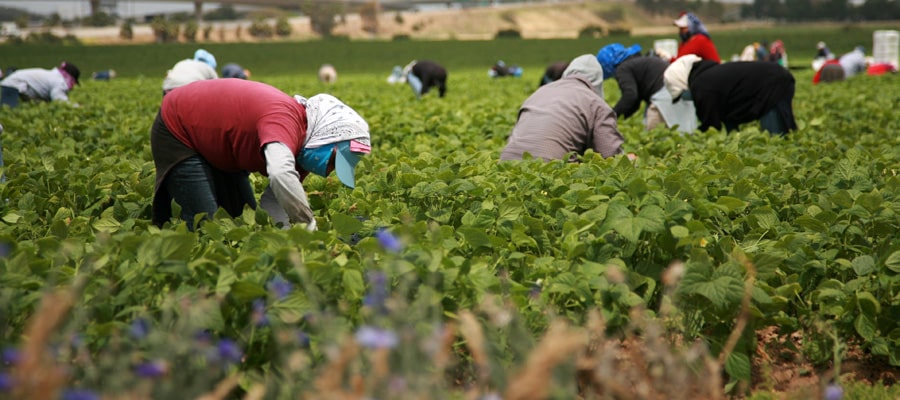This Labour Day, fruit pickers in BC may have been denied minimum wage

While many British Columbians and visitors may have enjoyed late summer produce like apples, peaches and plums this Labour Day weekend, the workers who pick these crops generally do not receive statutory holiday pay and many work for less than minimum wage.
The laws that govern conditions for agricultural workers make them vulnerable and exploitable, but the provincial government could easily change these laws to help ensure a dignified agricultural economy.
Pickers are typically paid a “piece-rate wage” according to how much they pick and government regulations set minimum piece rates for 15 crops. Employers have the discretion to pay either minimum piece rates or the minimum hourly wage. Unlike other BC workers, pickers are excluded from Employment Standards Act protections that guarantee the minimum hourly wage, which is now $13.85 per hour. BC is the only jurisdiction in North America that permits piece rates without ensuring workers earn at least the hourly minimum wage.
In 1981 (when the minimum wage applied to agriculture), the BC government established the piece rate as an olive branch to some growers. Piece rates are an incentive for workers to harvest quickly and reduce growers’ need to monitor productivity in the field. Government records shed little light on how piece rate changes are determined. Over the past 10 years, the general hourly minimum wage has increased 73 per cent, but minimum piece rates have increased only 35 per cent (not accounting for inflation).
When the crop is bountiful, a piece rate can be lucrative for manually skilled workers, especially those who can easily leave a cherry orchard with slim pickings and find a better-paying farm. But a piece rate can be wearisome outside of peak harvest times.
The laws that govern conditions for agricultural workers make them vulnerable and exploitable.
A prime example is older immigrant agricultural workers in the Fraser Valley. These workers tend to be hired through middle-person labour contractors and don’t choose where they work. Because of the pressure to earn enough to qualify for Employment Insurance for winter, piece rates can push people to work long hours at an intense pace. Such a pace can be particularly dangerous for these older workers.
Faced with these facts, the government-appointed Fair Wages Commission unanimously recommended increasing piece rates 15 per cent on June 1, 2018 and abolishing them entirely on June 1, 2019. Labour Minister Harry Bains accepted almost all of the Commission’s recommendations but these, including the schedule for implementing the $15 minimum wage.
He retained the piece rate system with the proviso that workers should “continue to make a fair wage” and said more research was needed. He commissioned agricultural economist Karen Taylor to study the issue. Her report was completed early this year but has not been made public despite a Freedom of Information request we filed.
More delays and research won’t change the fact that ensuring minimum wage protections for all workers is the right thing to do even if politically unpopular with employers who would prefer to pay a sub-minimum wage.
The Fair Wages Commission’s recommendations include that workers can continue to receive piece rates as long as they earn at least the hourly minimum wage. If the labour minister implemented the recommendations, the Employment Standards Act could be amended so that all agricultural workers receive the general hourly minimum wage.
Topics: Employment & labour, Immigrants & refugees


